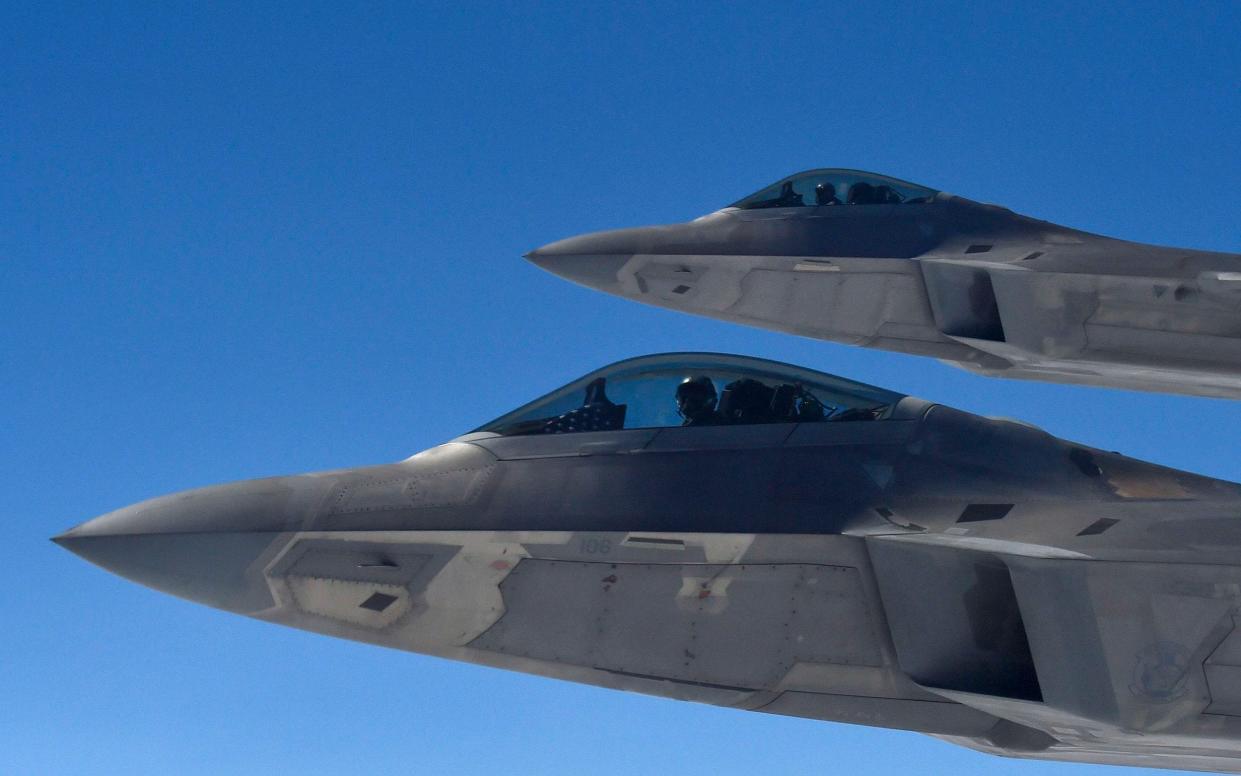New US missiles and stealth fighters in the Philippines will be crucial as China readies for war
The Pentagon is building up more bases in Luzon, the northernmost big island of The Philippines. The latest moves could have big implications, as Chinese hoarding of gold is thought by some to indicate that Beijing is preparing to move on Taiwan.
It’s hard to overstate how important America’s new Philippine bases are. They lie as close as 250 miles to Taiwan, helping to ease the tyranny of distance that is one of the biggest problems in US planning for a possible war with China over Taiwan. The only other major US base within 400 miles of Taiwan is in Okinawa, Japan’s southernmost prefecture.
Kadena air base in Okinawa would be a major hub – perhaps the major hub – for American forces fighting for Taiwan. But lying just 400 miles off the Chinese coast on an isolated island, Kadena is a big fat target for Chinese missiles.
More than a decade ago, the Pentagon conceded it needed more bases in close proximity to Taiwan. Which is why, back in 2014, the US and Philippine governments inked a new agreement granting American troops greater access to more bases in The Philippines. The two countries expanded the agreement last year.
It’s taken years for the new basing deal to go into effect. In one of the more visible demonstrations of this Philippine build-up, the US Army recently deployed part of one of its new missile task forces to Luzon.
The “mid-range capability battery,” one of four batteries in the Washington State-based 1st Multi-Domain Task Force, has hundreds of troops operating four quad-launchers that fire either Tomahawk land-attack cruise missiles or SM-6 interceptor missiles that can shoot down aircraft and enemy missiles, including ballistic and perhaps some kinds of hypersonic ones. The SM-6 can also, in a pinch, strike targets on the surface.
The new US battery can hit targets on land, at sea and in the air as far as a thousand miles away. Deploying it to Luzon, even temporarily, “is a significant step in our partnership with The Philippines,” said Brig. Gen. Bernard Harrington, the 1st MDTF’s commander.
From Luzon, Army missiles could swat at Chinese ships, planes, missiles and drones threatening Taiwan – or even strike at Chinese bases and ports hosting these ships, planes, missiles and drones. The same Army missiles could protect the old air base the US Air Force is reconditioning in Luzon.

The Air Force needs Luzon as badly as the Army does. Its best F-22 and F-35 stealth fighters can fly just 500 miles or so with internal fuel – 600 miles in the case of F-22s carrying underwing fuel tanks. Mid-air refueling can add some range.
In concentrating practically all of its best warplanes at Kadena during a clash with China, the Air Force would risk losing all those warplanes if Chinese forces managed to penetrate Kadena’s air defences and bombard the base.
It’s not for no reason that, in March 2023, the USAF deployed F-22s to Clark Air Base in Luzon. It was the first-ever deployment to The Philippines by American stealth fighters.
The Air Force is preparing to spread out its best jets in order to complicate Chinese targeting. But that’s only helpful to US war plans if the dispersed basing still puts forces within reach of the likeliest battle zones around Taiwan.
The 2014 basing agreement, amended in 2023, gives the Americans access to at least three other bases in Luzon. Last year, American and Philippine engineers began repairing a 1.7-mile runway at one of those bases, in Pampanga. The trend is clear: Luzon is becoming a possible major operating location for US forces.
Imagine USAF F-35s launching from Philippine air bases to tangle with Chinese jets over southern Taiwan, while US Army Tomahawks harry Chinese air bases and Army SM-6s intercept Chinese missiles targeting the F-35s and Tomahawk launchers.
If there’s a major obstacle to US forces staging from Luzon for operations around Taiwan, it’s political. There was a time when Philippine leaders were reluctant to involve their country in a potentially destructive regional conflict. Even now, it’s possible to imagine the government in Manila voicing strong support for the US-Philippine alliance – until the United States calls on that alliance to help defend Taiwan.
It’s also possible to observe that reluctance rapidly fading. Chinese ships have been tightening their cordon around the Philippine base on the disputed Second Thomas Shoal in the South China Sea. In March, Chinese coast guard vessels aimed powerful water cannons at a Philippine navy boat shuttling supplies to the base, itself a Philippine navy vessel the crew deliberately grounded on the shoal decades ago. This week, there has been more harassment of Philippine vessels in the South China Sea, in waters which belong to Manila under international law – but which Beijing claims as its own under its “Nine Dash Line” doctrine, under which for some reason it would own most of the Sea.
Some Philippine crew members have been injured, sparking a heated diplomatic row. With each maritime assault, Beijing drives Manila closer to Washington DC and, by extension, closer to other regional powers that have grown only more hostile to Chinese expansionism – and more likely to join the United States in fighting for Taiwan’s independence.
Critically, The Philippines wouldn’t need to launch a single missile or sortie a single warplane in order to help defeat a Chinese invasion of Taiwan. All it would need to do is let US forces – Army missile batteries and Air Force fighters – access those critical bases.


